├── .gitignore
├── CONTRIBUTING.md
├── LICENSE.md
├── README.md
├── docs
├── Makefile
├── api_reference.rst
├── conf.py
├── index.rst
├── installation.rst
├── plot_references
│ └── plot_reference.rst
├── quickstart
│ └── quickstart.ipynb
└── user_guide
│ ├── Customizing_Plots.ipynb
│ ├── Working_with_Geospatial_Data.ipynb
│ └── Working_with_Projections.ipynb
├── environment.yml
├── examples
├── README.rst
├── plot_boston_airbnb_kde.py
├── plot_california_districts.py
├── plot_dc_street_network.py
├── plot_largest_cities_usa.py
├── plot_los_angeles_flights.py
├── plot_melbourne_schools.py
├── plot_minard_napoleon_russia.py
├── plot_ny_state_demographics.py
├── plot_nyc_collision_factors.py
├── plot_nyc_collisions_map.py
├── plot_nyc_collisions_quadtree.py
├── plot_nyc_parking_tickets.py
├── plot_obesity.py
├── plot_san_francisco_trees.py
└── plot_usa_city_elevations.py
├── figures
├── dc-street-network.png
├── los-angeles-flights.png
├── nyc-collision-factors.png
├── nyc-parking-tickets.png
└── usa-city-elevations.png
├── geoplot
├── __init__.py
├── crs.py
├── datasets.py
├── geoplot.py
├── ops.py
└── utils.py
├── setup.py
└── tests
├── environment.yml
├── mixin_tests.py
├── proj_tests.py
└── viz_tests.py
/.gitignore:
--------------------------------------------------------------------------------
1 | .vscode/
2 | .cache/
3 | .DS_Store
4 | *.pyc
5 | __pycache__/
6 | build/
7 | docs/_build/
8 | _build/
9 | bin/
10 | dist/
11 | geoplot.egg-info/
12 | tests/baseline/
13 | .pytest_cache/
14 |
15 | # sphinx-gallery
16 | *.md5
17 | docs/gallery/
18 | *.zip
19 | examples/*.png
20 | _downloads
21 |
--------------------------------------------------------------------------------
/CONTRIBUTING.md:
--------------------------------------------------------------------------------
1 | # Contributing
2 |
3 | ## Cloning
4 |
5 | To work on `geoplot` locally, you will need to clone it.
6 |
7 | ```git
8 | git clone https://github.com/ResidentMario/geoplot.git
9 | ```
10 |
11 | You can then set up your own branch version of the code, and work on your changes for a pull request from there.
12 |
13 | ```bash
14 | cd geoplot
15 | git checkout -B new-branch-name
16 | ```
17 |
18 | ## Environment
19 |
20 | To install the `geoplot` development environment run the following in the root directory:
21 |
22 | ```bash
23 | conda env create -f environment.yml
24 | conda activate geoplot-dev
25 | pip install -e .[develop]
26 | ```
27 |
28 | ## Testing
29 |
30 | `geoplot` tests are located in the `tests` folder. Any PRs you submit should eventually pass all of the tests located in this folder.
31 |
32 | `mixin_tests.py` are static unit tests which can be run via `pytest` the usual way (by running `pytest mixin_tests.py` from the command line).
33 |
34 | `proj_tests.py` and `viz_tests.py` are visual tests run via the `pytest-mpl` plugin to be run: [see here](https://github.com/matplotlib/pytest-mpl#using) for instructions on how it's used. These tests are passed by visual inspection: e.g. does the output figure look the way it _should_ look, given the inputs?
35 |
36 | ## Documentation
37 |
38 | Documentation is provided via `sphinx`. To regenerate the documentation from the current source in one shot, navigate to the `docs` folder and run `make html`. Alternatively, to regenerate a single specific section, see the following section.
39 |
40 | ### Static example images
41 |
42 | The static example images on the repo and documentation homepages are located in the `figures/` folder.
43 |
44 | ### Gallery
45 |
46 | The gallery is generated using `sphinx-gallery`, and use the `examples/` folder as their source. The webmap examples are hosted on [bl.ocks.org](https://bl.ocks.org/) and linked to from their gallery landing pages.
47 |
48 | ### Quickstart
49 |
50 | The Quickstart is a Jupyter notebook in the `docs/quickstart/` directory. To rebuild the quickstart, edit the notebook, then run `make html` again.
51 |
52 | ### Tutorials
53 |
54 | The tutorials are Jupyter notebooks in the `docs/user_guide/` directory. To rebuild the tutorials, edit the notebook(s), then run `make html` again.
55 |
56 | ### Example data
57 |
58 | Most of the image resources in the documentation use real-world example data that is packaged as an accessory to this library. The home repo for these datasets is the [`geoplot-data`](https://github.com/ResidentMario/geoplot-data) repository. Use the `geoplot.datasets.get_path` function to get a path to a specific dataset readable by `geopandas`.
59 |
60 | ### Everything else
61 |
62 | The remaining pages are all written as `rst` files accessible from the top level of the `docs` folder.
63 |
64 | ### Serving
65 |
66 | The documentation is served at [residentmario.github.io](https://residentmario.github.io/geoplot/index.html) via GitHub's site export feature, served out of the `gh-pages` branch. To export a new version of the documentation to the website, run the following:
67 |
68 | ```bash
69 | git checkout gh-pages
70 | rm -rf *
71 | git checkout master -- docs/ examples/ geoplot/ .gitignore
72 | cd docs
73 | make html
74 | cd ..
75 | mv docs/_build/html/* ./
76 | rm -rf docs/ examples/ geoplot/
77 | git add .
78 | git commit -m "Publishing update docs..."
79 | git push origin gh-pages
80 | git checkout master
81 | ```
82 |
--------------------------------------------------------------------------------
/LICENSE.md:
--------------------------------------------------------------------------------
1 | The MIT License
2 |
3 | Copyright (c) 2016 Aleksey Bilogur
4 |
5 | Permission is hereby granted, free of charge, to any person obtaining a copy
6 | of this software and associated documentation files (the "Software"), to deal
7 | in the Software without restriction, including without limitation the rights
8 | to use, copy, modify, merge, publish, distribute, sublicense, and/or sell
9 | copies of the Software, and to permit persons to whom the Software is
10 | furnished to do so, subject to the following conditions:
11 |
12 | The above copyright notice and this permission notice shall be included in
13 | all copies or substantial portions of the Software.
14 |
15 | THE SOFTWARE IS PROVIDED "AS IS", WITHOUT WARRANTY OF ANY KIND, EXPRESS OR
16 | IMPLIED, INCLUDING BUT NOT LIMITED TO THE WARRANTIES OF MERCHANTABILITY,
17 | FITNESS FOR A PARTICULAR PURPOSE AND NONINFRINGEMENT. IN NO EVENT SHALL THE
18 | AUTHORS OR COPYRIGHT HOLDERS BE LIABLE FOR ANY CLAIM, DAMAGES OR OTHER
19 | LIABILITY, WHETHER IN AN ACTION OF CONTRACT, TORT OR OTHERWISE, ARISING FROM,
20 | OUT OF OR IN CONNECTION WITH THE SOFTWARE OR THE USE OR OTHER DEALINGS IN
--------------------------------------------------------------------------------
/README.md:
--------------------------------------------------------------------------------
1 | # geoplot: geospatial data visualization
2 |
3 | [](https://github.com/conda-forge/geoplot-feedstock)    [](https://zenodo.org/record/3475569)
4 |
5 |
6 | 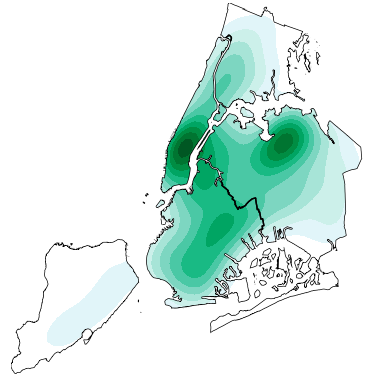 7 |
8 |
9 |
10 |
7 |
8 |
9 |
10 | 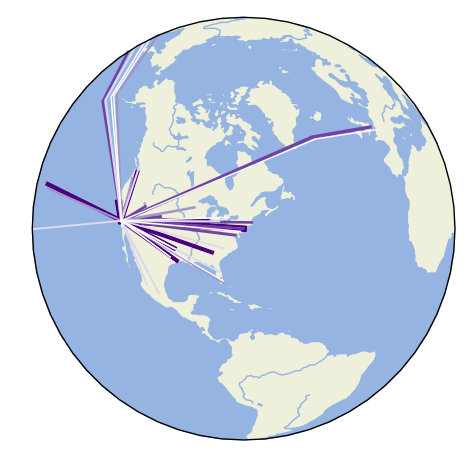 11 |
12 |
13 |
14 |
11 |
12 |
13 |
14 | 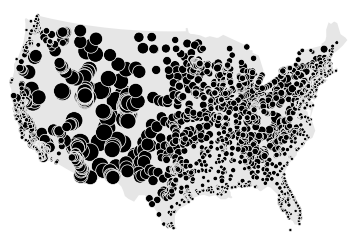 15 |
16 |
17 |
18 |
15 |
16 |
17 |
18 | 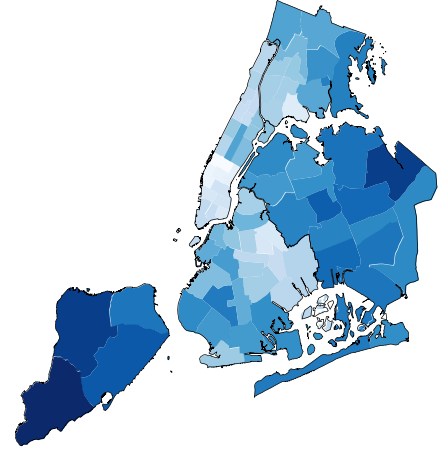 19 |
20 |
21 |
22 |
19 |
20 |
21 |
22 | 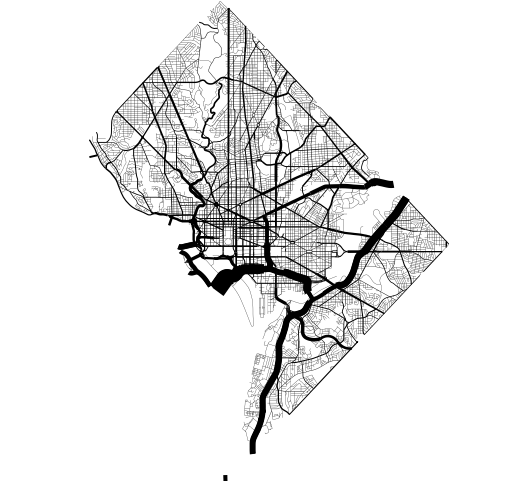 23 |
24 |
25 | `geoplot` is a high-level Python geospatial plotting library. It's an extension to `cartopy` and `matplotlib` which makes mapping easy: like `seaborn` for geospatial. It comes with the following features:
26 |
27 | * **High-level plotting API**: geoplot is cartographic plotting for the 90% of use cases. All of the standard-bearermaps that you’ve probably seen in your geography textbook are easily accessible.
28 | * **Native projection support**: The most fundamental peculiarity of geospatial plotting is projection: how do you unroll a sphere onto a flat surface (a map) in an accurate way? The answer depends on what you’re trying to depict. `geoplot` provides these options.
29 | * **Compatibility with `matplotlib`**: While `matplotlib` is not a good fit for working with geospatial data directly, it’s a format that’s well-incorporated by other tools.
30 |
31 | Installation is simple with `conda install geoplot -c conda-forge`. [See the documentation for help getting started](https://residentmario.github.io/geoplot/index.html).
32 |
33 | ----
34 |
35 | Author note: `geoplot` is currently in a **maintenence** state. I will continue to provide bugfixes and investigate user-reported issues on a best-effort basis, but do not expect to see any new library features anytime soon.
36 |
--------------------------------------------------------------------------------
/docs/Makefile:
--------------------------------------------------------------------------------
1 | # Minimal makefile for Sphinx documentation
2 | #
3 |
4 | # You can set these variables from the command line.
5 | SPHINXOPTS =
6 | SPHINXBUILD = sphinx-build
7 | SOURCEDIR = .
8 | BUILDDIR = _build
9 |
10 | # Put it first so that "make" without argument is like "make help".
11 | help:
12 | @$(SPHINXBUILD) -M help "$(SOURCEDIR)" "$(BUILDDIR)" $(SPHINXOPTS) $(O)
13 |
14 | .PHONY: help Makefile
15 |
16 | # Catch-all target: route all unknown targets to Sphinx using the new
17 | # "make mode" option. $(O) is meant as a shortcut for $(SPHINXOPTS).
18 | %: Makefile
19 | @$(SPHINXBUILD) -M $@ "$(SOURCEDIR)" "$(BUILDDIR)" $(SPHINXOPTS) $(O)
20 |
--------------------------------------------------------------------------------
/docs/api_reference.rst:
--------------------------------------------------------------------------------
1 | =============
2 | API Reference
3 | =============
4 |
5 | Plots
6 | -----
7 |
8 | .. currentmodule:: geoplot
9 |
10 | .. automethod:: geoplot.pointplot
11 |
12 | .. automethod:: geoplot.polyplot
13 |
14 | .. automethod:: geoplot.webmap
15 |
16 | .. automethod:: geoplot.choropleth
17 |
18 | .. automethod:: geoplot.kdeplot
19 |
20 | .. automethod:: geoplot.cartogram
21 |
22 | .. automethod:: geoplot.sankey
23 |
24 | .. automethod:: geoplot.quadtree
25 |
26 | .. automethod:: geoplot.voronoi
27 |
28 | Projections
29 | -----------
30 |
31 | .. automethod:: geoplot.crs.PlateCarree
32 |
33 | .. automethod:: geoplot.crs.LambertCylindrical
34 |
35 | .. automethod:: geoplot.crs.Mercator
36 |
37 | .. automethod:: geoplot.crs.WebMercator
38 |
39 | .. automethod:: geoplot.crs.Miller
40 |
41 | .. automethod:: geoplot.crs.Mollweide
42 |
43 | .. automethod:: geoplot.crs.Robinson
44 |
45 | .. automethod:: geoplot.crs.Sinusoidal
46 |
47 | .. automethod:: geoplot.crs.InterruptedGoodeHomolosine
48 |
49 | .. automethod:: geoplot.crs.Geostationary
50 |
51 | .. automethod:: geoplot.crs.NorthPolarStereo
52 |
53 | .. automethod:: geoplot.crs.SouthPolarStereo
54 |
55 | .. automethod:: geoplot.crs.Gnomonic
56 |
57 | .. automethod:: geoplot.crs.AlbersEqualArea
58 |
59 | .. automethod:: geoplot.crs.AzimuthalEquidistant
60 |
61 | .. automethod:: geoplot.crs.LambertConformal
62 |
63 | .. automethod:: geoplot.crs.Orthographic
64 |
65 | .. automethod:: geoplot.crs.Stereographic
66 |
67 | .. automethod:: geoplot.crs.TransverseMercator
68 |
69 | .. automethod:: geoplot.crs.LambertAzimuthalEqualArea
70 |
71 | .. automethod:: geoplot.crs.OSGB
72 |
73 | .. automethod:: geoplot.crs.EuroPP
74 |
75 | .. automethod:: geoplot.crs.OSNI
76 |
77 | .. automethod:: geoplot.crs.EckertI
78 |
79 | .. automethod:: geoplot.crs.EckertII
80 |
81 | .. automethod:: geoplot.crs.EckertIII
82 |
83 | .. automethod:: geoplot.crs.EckertIV
84 |
85 | .. automethod:: geoplot.crs.EckertV
86 |
87 | .. automethod:: geoplot.crs.EckertVI
88 |
89 | .. automethod:: geoplot.crs.NearsidePerspective
90 |
91 | Utilities
92 | ---------
93 |
94 | .. automethod:: geoplot.datasets.get_path
--------------------------------------------------------------------------------
/docs/conf.py:
--------------------------------------------------------------------------------
1 | # -*- coding: utf-8 -*-
2 | #
3 | # Configuration file for the Sphinx documentation builder.
4 | #
5 | # This file does only contain a selection of the most common options. For a
6 | # full list see the documentation:
7 | # https://www.sphinx-doc.org/en/master/config
8 |
9 | # -- Path setup --------------------------------------------------------------
10 |
11 | # If extensions (or modules to document with autodoc) are in another directory,
12 | # add these directories to sys.path here. If the directory is relative to the
13 | # documentation root, use os.path.abspath to make it absolute, like shown here.
14 | #
15 | # import os
16 | # import sys
17 | # sys.path.insert(0, os.path.abspath('.'))
18 |
19 |
20 | # -- Project information -----------------------------------------------------
21 |
22 | project = 'geoplot'
23 | copyright = '2016-2022, Aleksey Bilogur'
24 | author = 'Aleksey Bilogur'
25 |
26 | # The short X.Y version
27 | version = ''
28 | # The full version, including alpha/beta/rc tags
29 | release = '0.5.1'
30 |
31 |
32 | # -- General configuration ---------------------------------------------------
33 |
34 | # If your documentation needs a minimal Sphinx version, state it here.
35 | #
36 | # needs_sphinx = '1.0'
37 |
38 | # Add any Sphinx extension module names here, as strings. They can be
39 | # extensions coming with Sphinx (named 'sphinx.ext.*') or your custom
40 | # ones.
41 | extensions = [
42 | 'sphinx.ext.autodoc',
43 | 'sphinx.ext.viewcode',
44 | 'sphinx.ext.githubpages',
45 | 'sphinx.ext.napoleon',
46 | 'matplotlib.sphinxext.plot_directive',
47 | 'nbsphinx',
48 | 'sphinx_gallery.gen_gallery'
49 | ]
50 |
51 | # Sphinx gallery configuration
52 | sphinx_gallery_conf = {
53 | 'examples_dirs': '../examples', # path to scripts
54 | 'gallery_dirs': 'gallery', # path to save generated examples to
55 | }
56 |
57 | # Plot directive configuration
58 | plot_include_source = True
59 | plot_rcparams = {
60 | 'savefig.bbox': 'tight',
61 | 'savefig.pad_inches': 0.25,
62 | }
63 |
64 | # Add any paths that contain templates here, relative to this directory.
65 | templates_path = ['_templates']
66 |
67 | # The suffix(es) of source filenames.
68 | # You can specify multiple suffix as a list of string:
69 | #
70 | # source_suffix = ['.rst', '.md']
71 | source_suffix = '.rst'
72 |
73 | # The master toctree document.
74 | master_doc = 'index'
75 |
76 | # The language for content autogenerated by Sphinx. Refer to documentation
77 | # for a list of supported languages.
78 | #
79 | # This is also used if you do content translation via gettext catalogs.
80 | # Usually you set "language" from the command line for these cases.
81 | language = None
82 |
83 | # List of patterns, relative to source directory, that match files and
84 | # directories to ignore when looking for source files.
85 | # This pattern also affects html_static_path and html_extra_path.
86 | exclude_patterns = ['_build', 'Thumbs.db', '.DS_Store']
87 |
88 | # The name of the Pygments (syntax highlighting) style to use.
89 | pygments_style = None
90 |
91 |
92 | # -- Options for HTML output -------------------------------------------------
93 |
94 | # The theme to use for HTML and HTML Help pages. See the documentation for
95 | # a list of builtin themes.
96 | #
97 | html_theme = 'sphinx_rtd_theme'
98 |
99 | # Theme options are theme-specific and customize the look and feel of a theme
100 | # further. For a list of options available for each theme, see the
101 | # documentation.
102 | #
103 | # html_theme_options = {}
104 |
105 | # Add any paths that contain custom static files (such as style sheets) here,
106 | # relative to this directory. They are copied after the builtin static files,
107 | # so a file named "default.css" will overwrite the builtin "default.css".
108 | html_static_path = ['_static']
109 |
110 | # Custom sidebar templates, must be a dictionary that maps document names
111 | # to template names.
112 | #
113 | # The default sidebars (for documents that don't match any pattern) are
114 | # defined by theme itself. Builtin themes are using these templates by
115 | # default: ``['localtoc.html', 'relations.html', 'sourcelink.html',
116 | # 'searchbox.html']``.
117 | #
118 | # html_sidebars = {}
119 |
120 |
121 | # -- Options for HTMLHelp output ---------------------------------------------
122 |
123 | # Output file base name for HTML help builder.
124 | htmlhelp_basename = 'geoplotdoc'
125 |
126 |
127 | # -- Options for LaTeX output ------------------------------------------------
128 |
129 | latex_elements = {
130 | # The paper size ('letterpaper' or 'a4paper').
131 | #
132 | # 'papersize': 'letterpaper',
133 |
134 | # The font size ('10pt', '11pt' or '12pt').
135 | #
136 | # 'pointsize': '10pt',
137 |
138 | # Additional stuff for the LaTeX preamble.
139 | #
140 | # 'preamble': '',
141 |
142 | # Latex figure (float) alignment
143 | #
144 | # 'figure_align': 'htbp',
145 | }
146 |
147 | # Grouping the document tree into LaTeX files. List of tuples
148 | # (source start file, target name, title,
149 | # author, documentclass [howto, manual, or own class]).
150 | latex_documents = [
151 | (master_doc, 'geoplot.tex', 'geoplot Documentation',
152 | 'Aleksey Bilogur', 'manual'),
153 | ]
154 |
155 |
156 | # -- Options for manual page output ------------------------------------------
157 |
158 | # One entry per manual page. List of tuples
159 | # (source start file, name, description, authors, manual section).
160 | man_pages = [
161 | (master_doc, 'geoplot', 'geoplot Documentation',
162 | [author], 1)
163 | ]
164 |
165 |
166 | # -- Options for Texinfo output ----------------------------------------------
167 |
168 | # Grouping the document tree into Texinfo files. List of tuples
169 | # (source start file, target name, title, author,
170 | # dir menu entry, description, category)
171 | texinfo_documents = [
172 | (master_doc, 'geoplot', 'geoplot Documentation',
173 | author, 'geoplot', 'One line description of project.',
174 | 'Miscellaneous'),
175 | ]
176 |
177 |
178 | # -- Options for Epub output -------------------------------------------------
179 |
180 | # Bibliographic Dublin Core info.
181 | epub_title = project
182 |
183 | # The unique identifier of the text. This can be a ISBN number
184 | # or the project homepage.
185 | #
186 | # epub_identifier = ''
187 |
188 | # A unique identification for the text.
189 | #
190 | # epub_uid = ''
191 |
192 | # A list of files that should not be packed into the epub file.
193 | epub_exclude_files = ['search.html']
194 |
195 |
196 | # -- Extension configuration -------------------------------------------------
197 |
--------------------------------------------------------------------------------
/docs/index.rst:
--------------------------------------------------------------------------------
1 | geoplot: geospatial data visualization
2 | ======================================
3 |
4 | .. raw:: html
5 |
6 |
23 |
24 |
25 | `geoplot` is a high-level Python geospatial plotting library. It's an extension to `cartopy` and `matplotlib` which makes mapping easy: like `seaborn` for geospatial. It comes with the following features:
26 |
27 | * **High-level plotting API**: geoplot is cartographic plotting for the 90% of use cases. All of the standard-bearermaps that you’ve probably seen in your geography textbook are easily accessible.
28 | * **Native projection support**: The most fundamental peculiarity of geospatial plotting is projection: how do you unroll a sphere onto a flat surface (a map) in an accurate way? The answer depends on what you’re trying to depict. `geoplot` provides these options.
29 | * **Compatibility with `matplotlib`**: While `matplotlib` is not a good fit for working with geospatial data directly, it’s a format that’s well-incorporated by other tools.
30 |
31 | Installation is simple with `conda install geoplot -c conda-forge`. [See the documentation for help getting started](https://residentmario.github.io/geoplot/index.html).
32 |
33 | ----
34 |
35 | Author note: `geoplot` is currently in a **maintenence** state. I will continue to provide bugfixes and investigate user-reported issues on a best-effort basis, but do not expect to see any new library features anytime soon.
36 |
--------------------------------------------------------------------------------
/docs/Makefile:
--------------------------------------------------------------------------------
1 | # Minimal makefile for Sphinx documentation
2 | #
3 |
4 | # You can set these variables from the command line.
5 | SPHINXOPTS =
6 | SPHINXBUILD = sphinx-build
7 | SOURCEDIR = .
8 | BUILDDIR = _build
9 |
10 | # Put it first so that "make" without argument is like "make help".
11 | help:
12 | @$(SPHINXBUILD) -M help "$(SOURCEDIR)" "$(BUILDDIR)" $(SPHINXOPTS) $(O)
13 |
14 | .PHONY: help Makefile
15 |
16 | # Catch-all target: route all unknown targets to Sphinx using the new
17 | # "make mode" option. $(O) is meant as a shortcut for $(SPHINXOPTS).
18 | %: Makefile
19 | @$(SPHINXBUILD) -M $@ "$(SOURCEDIR)" "$(BUILDDIR)" $(SPHINXOPTS) $(O)
20 |
--------------------------------------------------------------------------------
/docs/api_reference.rst:
--------------------------------------------------------------------------------
1 | =============
2 | API Reference
3 | =============
4 |
5 | Plots
6 | -----
7 |
8 | .. currentmodule:: geoplot
9 |
10 | .. automethod:: geoplot.pointplot
11 |
12 | .. automethod:: geoplot.polyplot
13 |
14 | .. automethod:: geoplot.webmap
15 |
16 | .. automethod:: geoplot.choropleth
17 |
18 | .. automethod:: geoplot.kdeplot
19 |
20 | .. automethod:: geoplot.cartogram
21 |
22 | .. automethod:: geoplot.sankey
23 |
24 | .. automethod:: geoplot.quadtree
25 |
26 | .. automethod:: geoplot.voronoi
27 |
28 | Projections
29 | -----------
30 |
31 | .. automethod:: geoplot.crs.PlateCarree
32 |
33 | .. automethod:: geoplot.crs.LambertCylindrical
34 |
35 | .. automethod:: geoplot.crs.Mercator
36 |
37 | .. automethod:: geoplot.crs.WebMercator
38 |
39 | .. automethod:: geoplot.crs.Miller
40 |
41 | .. automethod:: geoplot.crs.Mollweide
42 |
43 | .. automethod:: geoplot.crs.Robinson
44 |
45 | .. automethod:: geoplot.crs.Sinusoidal
46 |
47 | .. automethod:: geoplot.crs.InterruptedGoodeHomolosine
48 |
49 | .. automethod:: geoplot.crs.Geostationary
50 |
51 | .. automethod:: geoplot.crs.NorthPolarStereo
52 |
53 | .. automethod:: geoplot.crs.SouthPolarStereo
54 |
55 | .. automethod:: geoplot.crs.Gnomonic
56 |
57 | .. automethod:: geoplot.crs.AlbersEqualArea
58 |
59 | .. automethod:: geoplot.crs.AzimuthalEquidistant
60 |
61 | .. automethod:: geoplot.crs.LambertConformal
62 |
63 | .. automethod:: geoplot.crs.Orthographic
64 |
65 | .. automethod:: geoplot.crs.Stereographic
66 |
67 | .. automethod:: geoplot.crs.TransverseMercator
68 |
69 | .. automethod:: geoplot.crs.LambertAzimuthalEqualArea
70 |
71 | .. automethod:: geoplot.crs.OSGB
72 |
73 | .. automethod:: geoplot.crs.EuroPP
74 |
75 | .. automethod:: geoplot.crs.OSNI
76 |
77 | .. automethod:: geoplot.crs.EckertI
78 |
79 | .. automethod:: geoplot.crs.EckertII
80 |
81 | .. automethod:: geoplot.crs.EckertIII
82 |
83 | .. automethod:: geoplot.crs.EckertIV
84 |
85 | .. automethod:: geoplot.crs.EckertV
86 |
87 | .. automethod:: geoplot.crs.EckertVI
88 |
89 | .. automethod:: geoplot.crs.NearsidePerspective
90 |
91 | Utilities
92 | ---------
93 |
94 | .. automethod:: geoplot.datasets.get_path
--------------------------------------------------------------------------------
/docs/conf.py:
--------------------------------------------------------------------------------
1 | # -*- coding: utf-8 -*-
2 | #
3 | # Configuration file for the Sphinx documentation builder.
4 | #
5 | # This file does only contain a selection of the most common options. For a
6 | # full list see the documentation:
7 | # https://www.sphinx-doc.org/en/master/config
8 |
9 | # -- Path setup --------------------------------------------------------------
10 |
11 | # If extensions (or modules to document with autodoc) are in another directory,
12 | # add these directories to sys.path here. If the directory is relative to the
13 | # documentation root, use os.path.abspath to make it absolute, like shown here.
14 | #
15 | # import os
16 | # import sys
17 | # sys.path.insert(0, os.path.abspath('.'))
18 |
19 |
20 | # -- Project information -----------------------------------------------------
21 |
22 | project = 'geoplot'
23 | copyright = '2016-2022, Aleksey Bilogur'
24 | author = 'Aleksey Bilogur'
25 |
26 | # The short X.Y version
27 | version = ''
28 | # The full version, including alpha/beta/rc tags
29 | release = '0.5.1'
30 |
31 |
32 | # -- General configuration ---------------------------------------------------
33 |
34 | # If your documentation needs a minimal Sphinx version, state it here.
35 | #
36 | # needs_sphinx = '1.0'
37 |
38 | # Add any Sphinx extension module names here, as strings. They can be
39 | # extensions coming with Sphinx (named 'sphinx.ext.*') or your custom
40 | # ones.
41 | extensions = [
42 | 'sphinx.ext.autodoc',
43 | 'sphinx.ext.viewcode',
44 | 'sphinx.ext.githubpages',
45 | 'sphinx.ext.napoleon',
46 | 'matplotlib.sphinxext.plot_directive',
47 | 'nbsphinx',
48 | 'sphinx_gallery.gen_gallery'
49 | ]
50 |
51 | # Sphinx gallery configuration
52 | sphinx_gallery_conf = {
53 | 'examples_dirs': '../examples', # path to scripts
54 | 'gallery_dirs': 'gallery', # path to save generated examples to
55 | }
56 |
57 | # Plot directive configuration
58 | plot_include_source = True
59 | plot_rcparams = {
60 | 'savefig.bbox': 'tight',
61 | 'savefig.pad_inches': 0.25,
62 | }
63 |
64 | # Add any paths that contain templates here, relative to this directory.
65 | templates_path = ['_templates']
66 |
67 | # The suffix(es) of source filenames.
68 | # You can specify multiple suffix as a list of string:
69 | #
70 | # source_suffix = ['.rst', '.md']
71 | source_suffix = '.rst'
72 |
73 | # The master toctree document.
74 | master_doc = 'index'
75 |
76 | # The language for content autogenerated by Sphinx. Refer to documentation
77 | # for a list of supported languages.
78 | #
79 | # This is also used if you do content translation via gettext catalogs.
80 | # Usually you set "language" from the command line for these cases.
81 | language = None
82 |
83 | # List of patterns, relative to source directory, that match files and
84 | # directories to ignore when looking for source files.
85 | # This pattern also affects html_static_path and html_extra_path.
86 | exclude_patterns = ['_build', 'Thumbs.db', '.DS_Store']
87 |
88 | # The name of the Pygments (syntax highlighting) style to use.
89 | pygments_style = None
90 |
91 |
92 | # -- Options for HTML output -------------------------------------------------
93 |
94 | # The theme to use for HTML and HTML Help pages. See the documentation for
95 | # a list of builtin themes.
96 | #
97 | html_theme = 'sphinx_rtd_theme'
98 |
99 | # Theme options are theme-specific and customize the look and feel of a theme
100 | # further. For a list of options available for each theme, see the
101 | # documentation.
102 | #
103 | # html_theme_options = {}
104 |
105 | # Add any paths that contain custom static files (such as style sheets) here,
106 | # relative to this directory. They are copied after the builtin static files,
107 | # so a file named "default.css" will overwrite the builtin "default.css".
108 | html_static_path = ['_static']
109 |
110 | # Custom sidebar templates, must be a dictionary that maps document names
111 | # to template names.
112 | #
113 | # The default sidebars (for documents that don't match any pattern) are
114 | # defined by theme itself. Builtin themes are using these templates by
115 | # default: ``['localtoc.html', 'relations.html', 'sourcelink.html',
116 | # 'searchbox.html']``.
117 | #
118 | # html_sidebars = {}
119 |
120 |
121 | # -- Options for HTMLHelp output ---------------------------------------------
122 |
123 | # Output file base name for HTML help builder.
124 | htmlhelp_basename = 'geoplotdoc'
125 |
126 |
127 | # -- Options for LaTeX output ------------------------------------------------
128 |
129 | latex_elements = {
130 | # The paper size ('letterpaper' or 'a4paper').
131 | #
132 | # 'papersize': 'letterpaper',
133 |
134 | # The font size ('10pt', '11pt' or '12pt').
135 | #
136 | # 'pointsize': '10pt',
137 |
138 | # Additional stuff for the LaTeX preamble.
139 | #
140 | # 'preamble': '',
141 |
142 | # Latex figure (float) alignment
143 | #
144 | # 'figure_align': 'htbp',
145 | }
146 |
147 | # Grouping the document tree into LaTeX files. List of tuples
148 | # (source start file, target name, title,
149 | # author, documentclass [howto, manual, or own class]).
150 | latex_documents = [
151 | (master_doc, 'geoplot.tex', 'geoplot Documentation',
152 | 'Aleksey Bilogur', 'manual'),
153 | ]
154 |
155 |
156 | # -- Options for manual page output ------------------------------------------
157 |
158 | # One entry per manual page. List of tuples
159 | # (source start file, name, description, authors, manual section).
160 | man_pages = [
161 | (master_doc, 'geoplot', 'geoplot Documentation',
162 | [author], 1)
163 | ]
164 |
165 |
166 | # -- Options for Texinfo output ----------------------------------------------
167 |
168 | # Grouping the document tree into Texinfo files. List of tuples
169 | # (source start file, target name, title, author,
170 | # dir menu entry, description, category)
171 | texinfo_documents = [
172 | (master_doc, 'geoplot', 'geoplot Documentation',
173 | author, 'geoplot', 'One line description of project.',
174 | 'Miscellaneous'),
175 | ]
176 |
177 |
178 | # -- Options for Epub output -------------------------------------------------
179 |
180 | # Bibliographic Dublin Core info.
181 | epub_title = project
182 |
183 | # The unique identifier of the text. This can be a ISBN number
184 | # or the project homepage.
185 | #
186 | # epub_identifier = ''
187 |
188 | # A unique identification for the text.
189 | #
190 | # epub_uid = ''
191 |
192 | # A list of files that should not be packed into the epub file.
193 | epub_exclude_files = ['search.html']
194 |
195 |
196 | # -- Extension configuration -------------------------------------------------
197 |
--------------------------------------------------------------------------------
/docs/index.rst:
--------------------------------------------------------------------------------
1 | geoplot: geospatial data visualization
2 | ======================================
3 |
4 | .. raw:: html
5 |
6 |
7 |
13 |
14 |
20 |
21 |
27 |
28 |
34 |
35 |
41 |
42 |
 11 |
12 |
11 |
12 |  11 |
12 |
11 |
12 |  18 |
19 |
18 |
19 |  18 |
19 |
18 |
19 |  25 |
26 |
25 |
26 |  25 |
26 |
25 |
26 |  32 |
33 |
32 |
33 |  32 |
33 |
32 |
33 |  39 |
40 |
39 |
40 |  39 |
40 |
39 |
40 |